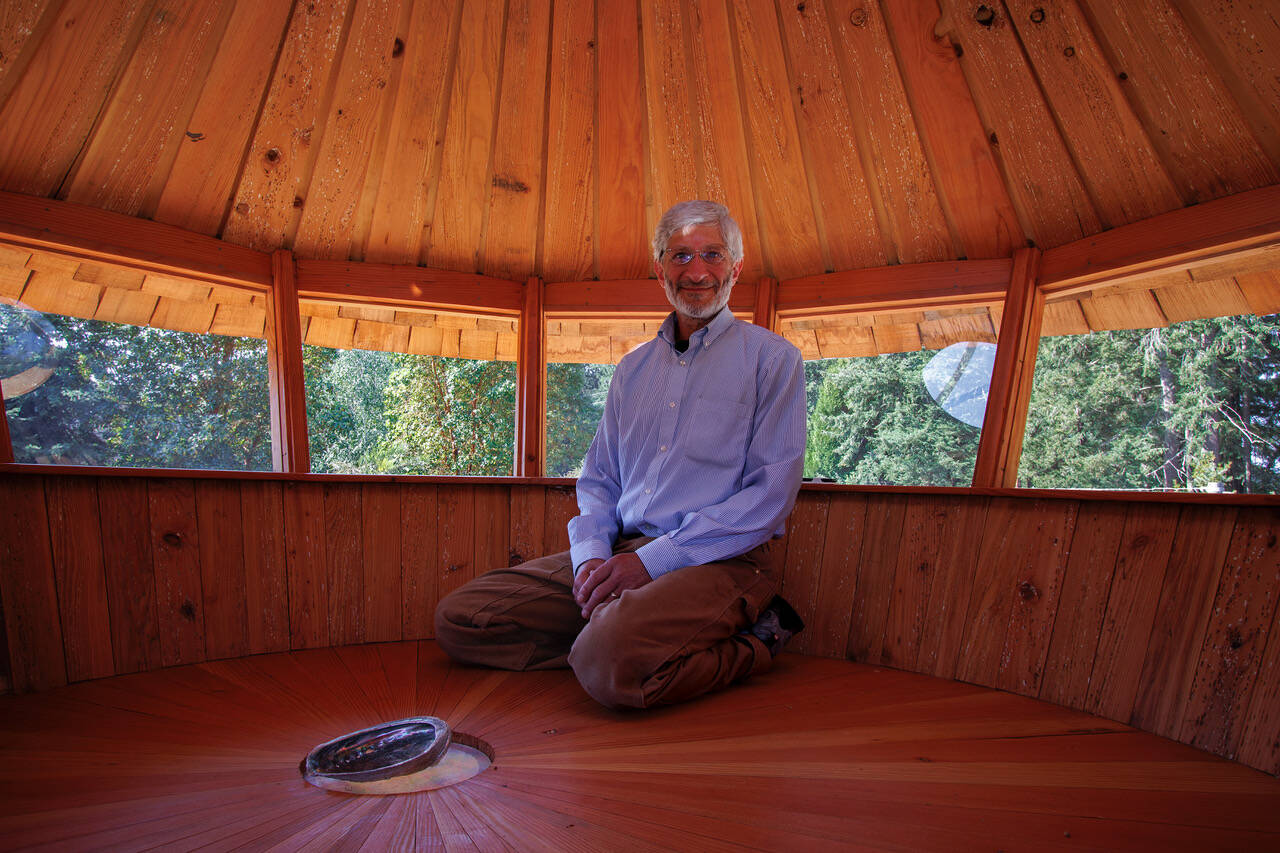South Whidbey residents who regularly traverse Bayview Road may have noticed an interesting phenomenon crop up in the past few months – two unique wooden structures that seem to resemble flying saucers, one of which is perched atop legs and hoisted 6 feet into the air.
The small buildings – which are yurts, by the way – happen to be built by earth dweller Dan Neumeyer. The public is invited to come experience the distinctive structures at an upcoming open house from 10 a.m. to 2 p.m. on Sept. 3 at 5779 Bayview Road in Langley.
“People are familiar with yurts, but they’ve never seen a yurt like this before,” he said.
Neumeyer has been thinking about yurts for 50 years. At the age of 10, when his fascination began, he convinced his parents to allow him to leave home in order to be mentored by Bill Coperthwaite, who introduced yurts to the Western world in the 1960s. A math teacher at an alternative high school, Coperthwaite read a National Geographic article about Mongolian yurts and decided to try adapting them to the New England climate as a project for his students.
A traditional Mongolian yurt is a circular abode draped in felt or other fabric. Coperthwaite developed the taper-wall yurt, which in comparison has outward sloping walls, is made of wood and is not covered by any fabric.
Neumeyer apprenticed with the yurt pioneer for some time, leading workshops and helping people build yurts. He studied architecture and later founded JADE Craftsman Builders in Freeland in 1999 after moving to Whidbey Island. Although his company’s focus is building homes, yurts have never strayed far from his mind.
“Continuously through my life I’ve taken time out to build structures like this,” he said. “I just can’t help it.”
Over the years he’s built custom yurts for island residents, as well as traveled around the country helping others build their own and leading a series of classes.
He’s spent the last couple of years building the two structures that are currently on display outside of the Bob Bowling Rustics workshop on Bayview Road. They are both for sale.
The Siskin Yurt, which sits on the ground, has an 8-foot diameter at the eaves and five-sided walls. Neumeyer can easily see it being used for a clay oven, a garden shed, a meditation space, a bird-watching spot or a children’s playhouse. Its price is listed at $7,000.
The Hummingbird Yurt, which can be accessed by a narrow flight of steps, is akin to a treehouse. The 13-sided enclosed yurt has a 12-foot diameter at the eaves and a 7-foot diameter at the floor. There’s a front door and an LED light built into the floor, which could make for glamping or a splashy home office. The intricate ceiling boards come from a salvaged old growth Douglas fir that was felled on the Olympic Peninsula 100 years ago. A Japanese method of charring wood, shou sugi ban, was used to preserve the exterior boards.
Because of the sheer amount of craftsmanship that went into building the latter yurt, the price is significantly higher.
“I can’t wait to see where these two find a home,” Neumeyer said. “Somewhere, they’re going to find the right bluff or the right little grove in the woods.”
The Hummingbird Yurt also has a special place in Neumeyer’s heart. Its design was inspired by a sketch made by Coperthwaite while the pair was working together on a yurt on Whidbey Island 15 years ago. Coperthwaite even built an early version of the yurt as a display at a county fair in Maine. Coperthwaite passed away in 2013.
The roofs and the curvature of both structures are Neumeyer’s own take on the wooden yurt Coperthwaite developed.
“For me, this was a project of mine and it’s a treat when I’m working at my desk and on my computer and lining up residential jobs, to switch it up and work on some craftsmanship like this,” he said.
For more information, visit jadecraftsmanbuilders.com/jade-yurts.



